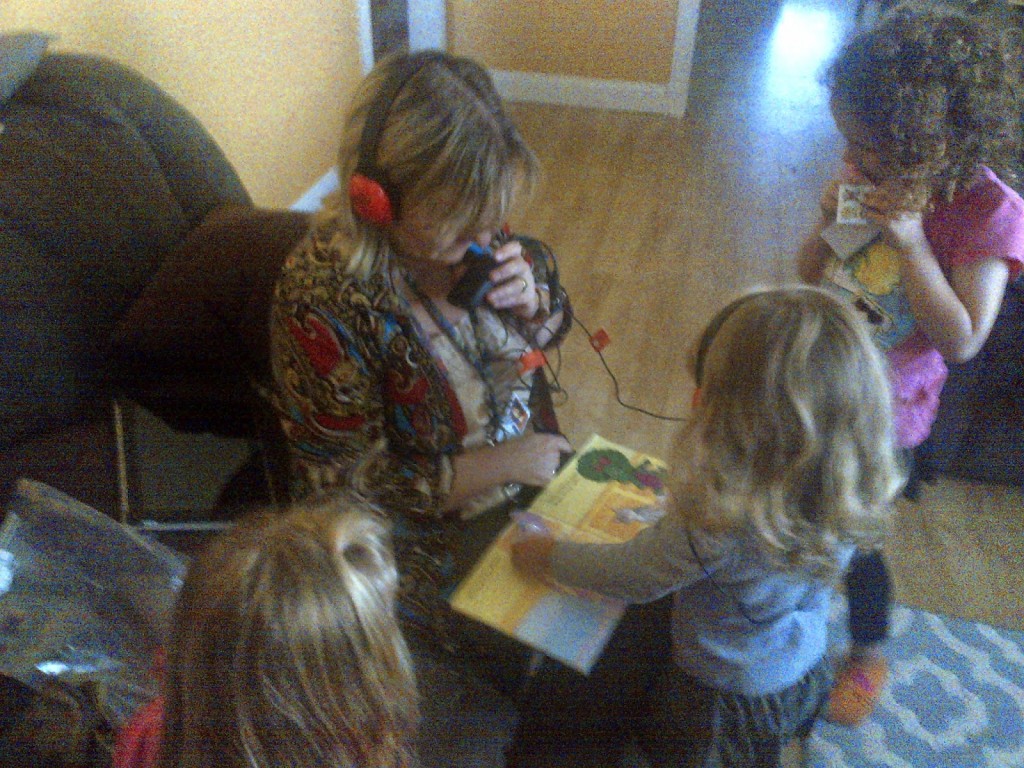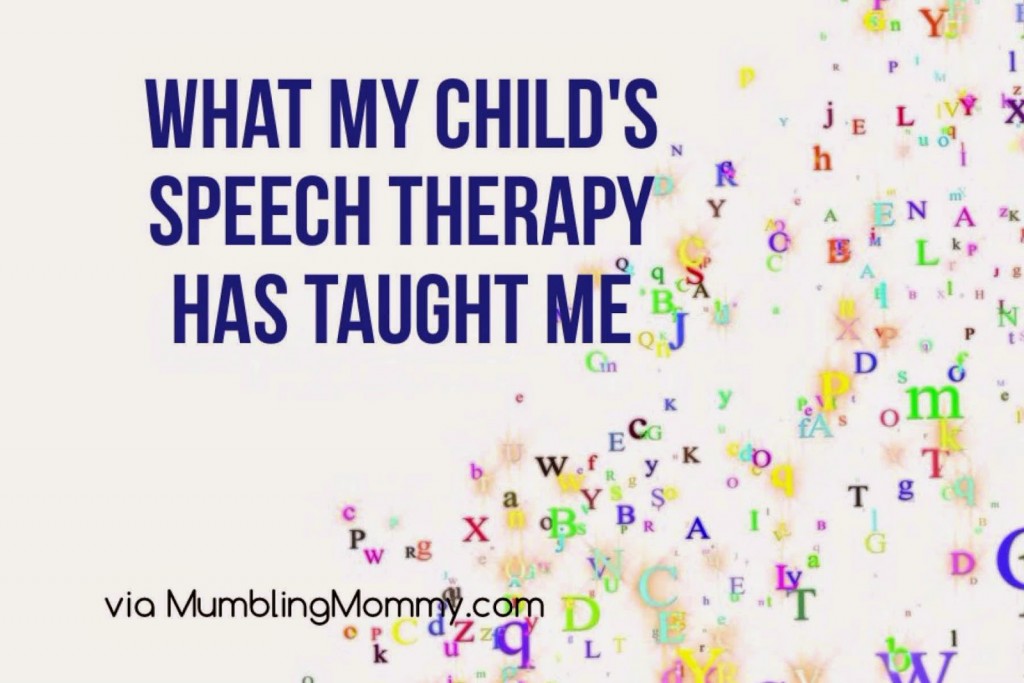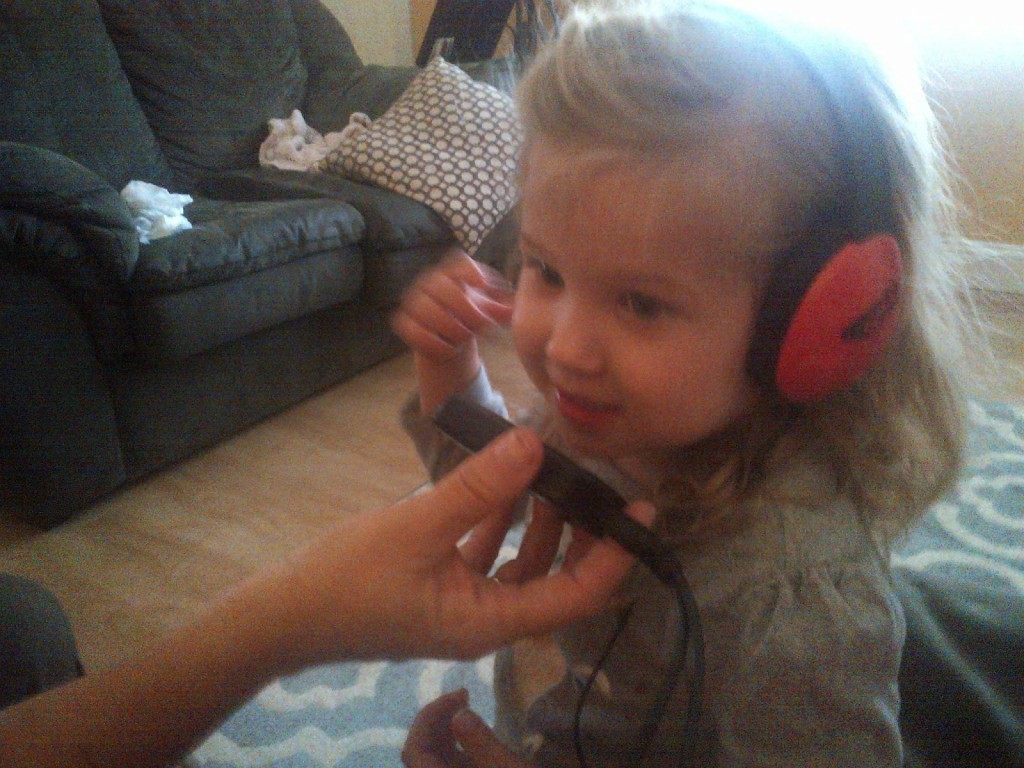Just before my daughter’s second birthday I found myself Googling the term “how many words should my two year old say?” When she was born, I envisioned a child who was using complete sentences by her first birthday in an attempt to keep up with her three older siblings. What really happened was the opposite: Erinn spoke just a handful of words, and became easily aggravated if she could not communicate her needs/wants to us. I figured she should probably be saying more by now, and had voiced this concern to my husband for several months. I kept expecting her to wake up one morning and have a fully-stocked vocabulary but as she got older, she seemed to be falling further behind her peers. When my Google search returned answers like “200 words” and even higher from a variety of trusted sites, I panicked. I panicked even more when I saw the words ‘speech therapy’.
I brought up my concerns to my pediatrician who wasn’t quite as frantic as me. She said that younger siblings often have so many people to “talk for them” that there is no urgency for words. She said that Erinn withholding words was also in line with her personality but that yes, she should be speaking more and articulating her needs in an understandable way. Her office called in a referral for Erinn to Florida’s Early Steps program and we started the process of setting up an evaluation that ultimately led to Erinn qualifying for speech and language help through the state – at no cost to our family.
Since September, a speech therapist has come to our home for an hour once a week and worked one-on-one with Erinn in the specific areas identified in her evaluation. Erinn will age out of the program in May but will enter a new one through the school system. We’ve been told that though she is still behind her peers in some areas, she should catch up fully within a few years.
I thought speech therapy would be pretty straightforward when we started this process. Erinn didn’t talk enough, so she would learn how to do it more. Simple enough. What I’ve learned these past six months, however, is that speech therapy and other early intervention services are complex and delve deeper than the surface superficiality of my initial concerns. My daughter has learned a lot through her speech therapy but so have I, including that…
Speech Therapy Taught Me…
Speech is not quantifiable. Remember that Google search and the dreaded answers I received? It turns out that measuring speech based on a quantity of words is not very effective. The amount of words a child can speak and understand is just a small portion of their total speech and language understanding (also, speech and language are two distinct areas and not actually interchangeable when discussing development). Like any development, assigning an arbitrary number in a pass/fail format is not especially helpful to anyone – least of all the child.
I had work to do, too. Imagine my surprise when our case manager told me that the Early Steps program followed a coaching model for parents. We would not simply hand Erinn off to a therapist once per week, cross our fingers and hope she improved. My husband and I (and our other kids by extension) would be an active part of Erinn’s speech therapy, both during the sessions and the rest of the week. I was asked to pay closer attention to the ways I communicated with my daughter, and to determine if my other children anticipated her needs and filled them before she needed to use words. When I started to pay closer attention to our family dynamic and how it impacted Erinn’s speech and language, I realized she was not given many opportunities during a typical day to voice her needs. If she pointed a certain way, looked a certain direction, or simply entered a room in some cases someone would hand her whatever she needed — no words necessary. It took several weeks to retrain myself and the rest of my family. Soon the phrase “use your words” was echoed throughout our home and because she was being asked to use them, Erinn started to verbally ask for things.
 |
| Older sisters participating in Erinn’s speech therapy, too |
Erinn thrives in structured learning. When you live with a high-needs baby-turned-toddler, routine and familiar people are musts. You also learn to never know exactly what to expect. I worried that the presence of a stranger in our home who was asking Erinn to do specific activities wouldn’t go over very well. I envisioned a lot of tantrums, belligerence and bribery by Skittles. True to her nature, Erinn defied my expectations. When Ms. Leslie arrived at our front door every week, Erinn was beside herself with delight. She went and sat immediately on our living room rug, in the exact same spot as the week before, and waited for Ms. Leslie to unpack her bag and start the day’s activities. There were times Erinn got off track, as two year olds often do, but she was a willing participant and I could see the wheels turning every single time Ms. Leslie came over.
Early intervention is really common. I was never ashamed of Erinn’s delays but part of my concern was that she was “different” or would not catch up to her peers. When I spoke to friends and family about her need for speech therapy, I heard several stories of others who had either gone through early intervention therapy firsthand or for their kids. When I posted about it on Facebook, even more people encouraged me to take advantage of the incredible help offered to kids like my Erinn and many of those cheerleaders were coming from a place of personal experience. My initial panic faded when I realized that a speech and language delay was not a lifelong indicator of a problem. It was something that could be faced, worked through and conquered.
First time here? Like Mumbling Mommy on Facebook to continue the conversation!
You may also enjoy these posts:
What is a high needs baby – and do I have one?
What I learned the first five years as a parent
New baby: The siblings who didn’t care
Changing the newborn mentality
Category: Special NeedsTags: early intervention










